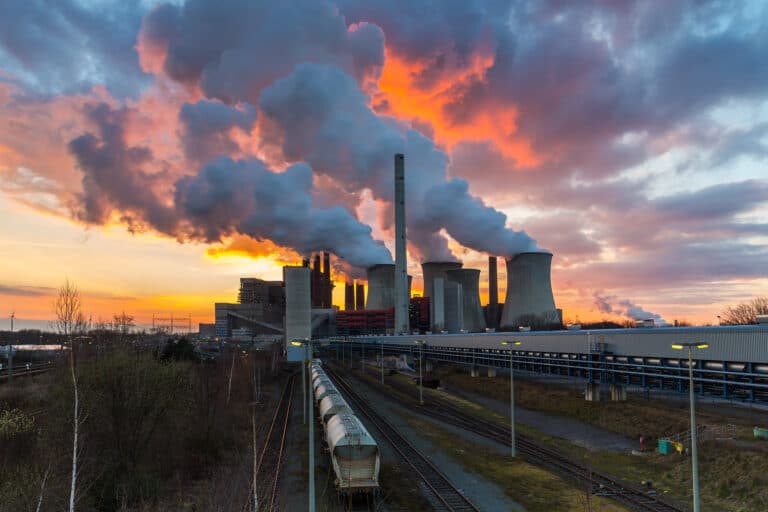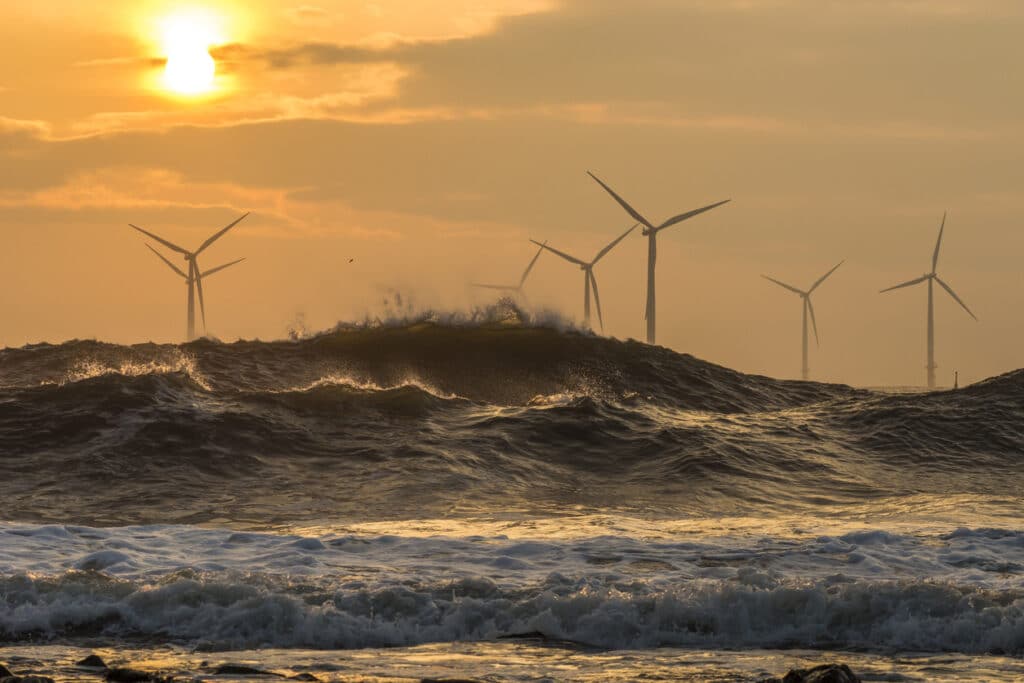By Gireesh Shrimali, PhD; University of Oxford
Limiting global warming to 1.5°C – required to avoid catastrophic damages – implies reaching net zero CO2 emissions globally around 2050. Recognizing this, the UNFCC COP21 in Paris in 2015 set net-zero emissions as a goal for countries and business.[1] In response, increasing number of not only countries but also companies are setting net-zero targets,[2] including using guidance issued by the Science Based Targets Initiative (SBTi).[3]
However, for most part, the discussion stays focused on emission pathways, as opposed to getting deeper into the resulting mix of technological options and subsequently capital expenditure (CAPEX). In particular, the latter is key given the connection to investments. Furthermore, there are multiple emission pathways to get to net-zero emissions, with different – and sometimes contradictory – roles for technological options, raising the question of which pathway to follow.
For example, the IPCC highlights close to hundred pathways to net-zero emissions, with vastly differing and exactly opposite roles for natural gas.[4] For the 1.5C target, one pathway estimates an increase of natural gas consumption by 85% by 2050, whereas another estimates an 88% reduction by the same time. These discrepancies are due to differences in assumptions inherent in creating these scenarios, around technology costs and deployment rates as well as population and energy demand growth. So, depending on what assumptions an investor believes in, they may end up either significantly increase or decrease their investments into natural gas, with vastly different consequences depending on which scenario actually plays out.
Further, many reports talk about emission pathways, but these are modelled trajectories of global emissions without a geographical or sectoral flavor. For example, the well-known net-zero by 2050 report by the International Energy Agency (IEA),[5] does not differentiate across countries based on fair allocation of carbon budgets based on historical emissions. Thus, any further measures derived for individual companies, such as the Sectoral Decarbonization Approach (SDA),[6] would inherit these limitations.

On the other hand, for financial institutions, there are open questions around what can be funded under net-zero commitments. Specifically, there is a lot of confusion around which transition activities can be funded. For example, financial institutions are asking questions such as the following: Can we fund greenfield oil and gas exploration and production facilities? Can we fund energy efficiency improvements in cement plans in Africa?[7] Etc.
This has resulted in development of taxonomies on what is green finance and what is transition finance. On the former, which relates to what low-carbon activities are, while multiple green taxonomies exist,[8] notable examples are the EU,[9] UK,[10] and China. On the latter, which relates to higher-carbon activities still required for net-zero transitions – e.g., due to non-availability of commercially proven green options –[11] there are ongoing efforts worldwide, including in Japan,[12] Singapore,[13] and Canada.[14]
However, the taxonomies remain mired in controversies, e.g., on the continued role of fossil fuels, especially natural gas – for example, see the EU’s Complementary Delegated Act to Accelerate Decarbonization,[15] where the inclusion of natural gas in the sustainable finance taxonomy may be due to concerns around viability of purely green options as well as an implication of political compromise based on national interests.
So, how do we address the key question: What can be financed under net-zero commitments and until when?

One simple way to address this question of what can be financed under net-zero commitment is via development of pathway envelopes. These pathway envelopes are simply the set of feasible investment pathways under net-zero commitments, with the boundary pathways defining the minimum as well as the maximum that is consistent with net-zero commitments.
Then, if an investment activity falls within the feasible pathway envelope, i.e., between the minimum and the maximum, it should be allowed under net-zero commitments. From a high-carbon investment perspective, the maximum would correspond to an emission pathway that is still consistent with net-zero emissions but going above which would blow the corresponding carbon budget. Similarly, from the same (i.e., high-carbon investment) perspective, the minimum would correspond to a no-regret emission pathway that would be supported under all possible future scenarios.
These pathway envelopes would necessarily be at sectoral and geographical granularity, derived in three steps that start at emission pathways, move to technology pathways, and end up at investment pathways. Each of these steps are described below.
First, the emission pathways derived from carbon budgets. This is typically available via integrated assessment models (IAMs) that combine economic, energy system, and climate models. As highlighted earlier, this will need to have sectoral as well as geographical flavor. That is, a sector by country matrix would be useful in developing the pathway envelopes.
Second, the technology pathways – e.g., energy system requirements in terms of the share of fossil vs renewable fuels in the power mix – derived from the emission pathways. This is also typically available via integrated assessment models (IAMs) as well, given that any level of sectoral carbon emissions can be decomposed into constituent technology emissions. The idea is carbon budgets that are consistent with the 1.5 °C target generally require a massive scale up of low carbon technologies. The level of deployment of technology however depends strongly on the timing of policies – e.g., delay in mitigation efforts up to 2030 could result in enhanced deployment during 2030-50.
Third, the investment pathways – in terms of funding needed for capital expenditure or CAPEX – derived from the technology mix pathways. This can also be available via IAMs, but in this case, we need to account for chunky investment decisions.[16] That is, investments result in step changes in productions, and therefore emissions, from corresponding technologies – e.g., an investment in a GW coal-based power plant would necessarily result in step changes in emission profiles when the plant starts operating.

These sets of pathways can then be designated as the feasible pathway envelopes. To remain eligible for net-zero emissions, a high-carbon investment would need to be on an investment pathway below the highest emission one in the envelope. That is, if a high-carbon investment is on a higher emission pathway than the envelope boundary, it is no longer eligible. This test addresses the issue of eligibility of a high-carbon investment for net-zero transitions.
Similarly, a high-carbon investment corresponding to the lowest emission pathway, which could be termed as the aspirational (or no-regret) pathway, would correspond to the most ambitious, and feasible, climate action. Put another way, this high-carbon investment would need to be made in all possible future net-zero scenarios, making it a no-regret (and most defensible) investment from a financial institution’s perspective.
Another benefit of the pathway envelopes, in particular the aspirational pathway, is that it would allow financiers to incentivize more ambitious climate pathways using financial tools, e.g., via sustainability linked finance, such as loans and bonds.[17] For example, an action that moves a firm towards the aspirational pathway could be rewarded using better terms of finance, such as a lower cost of capital, or perhaps a longer tenor on debt finance.
While the high-level idea is clear at this point, a remaining question is whether any work exists on this subject. Of course, there is some existing work on this – e.g., the IPCC 1.5C scenarios themselves.[18] Similarly, the Glasgow Financial Alliance for Net Zero (GFANZ) has been working on guidance on use of sectoral pathways for financial institutions.[19] Finally, similar work exists from the Energy Transition Commission (ETC),[20] the International Energy Agency (IEA),[21] the Mission Possible Partnership (MPP),[22] the Transition Pathway Initiative (TPI),[23] etc.
However, this existing body of work is incomplete from the perspectives of sectoral pathway envelopes incorporating geographical considerations. That is, all feasible pathways, or at least the extreme – corresponding minimum and maximum emissions – pathways. This requires, as a first step, a consolidation of existing approaches from the existing literature and, as a second step, development of further pathways at required sectoral and geographical granularity. Both of these steps would require significant collaborative efforts, involving academic institutions, think tanks, and practitioners.
[1] See The Paris Agreement: 1.5C to Stay Alive | HuffPost Impact
[2] See https://www.forbes.com/sites/dishashetty/2021/03/24/a-fifth-of-worlds-largest-companies-committed-to-net-zero-target/
[3] See The Net-Zero Standard – Science Based Targets
[4] See Charting the Course to Climate-Aligned Finance – RMI
[5] See Net Zero by 2050 – Analysis – IEA
[6] See Methodologies -Book.indb (sciencebasedtargets.org)
[7] See Transition finance for Africa – British International Investment (bii.co.uk)
[8] See Fact Sheet: Green taxonomies explained | IEEFA as well as cbi_taxonomy_ukpact_2022_01f.pdf (climatebonds.net)
[9] See EU taxonomy for sustainable activities (europa.eu) as well as TEG final report on the EU taxonomy (europa.eu)
[10] See REPORT (greenfinanceinstitute.co.uk)
[11] See Full article: Defining transition finance and embedding it in the post-Covid-19 recovery (tandfonline.com)
[12] See 20220526_EN_01.pdf (fsa.go.jp)
[13] See Taxonomy (mas.gov.sg)
[14] See A Transition Financing Taxonomy for Canada – Insights from the Global Climate Bond Initiative – Canada Climate Law Initiative (ubc.ca)
[15] See EU Taxonomy: Complementary Climate Delegated Act (europa.eu)
[16] See Fankhauser S, et al. (2023), From Principles to Targets: How Can Development Finance Institutions Operationalize Net-Zero, unpublished manuscript.
[17] See Sustainability-Linked Finance : Mobilizing Capital for Sustainability in Emerging Markets (worldbank.org)
[18] See Global Warming of 1.5 ºC — (ipcc.ch)
[19] See https://assets.bbhub.io/company/sites/63/2022/06/GFANZ_Guidance-on-Use-of-Sectoral-Pathways-for-Financial-Institutions_June2022.pdf. Also, unpublished/upcoming manuscripts at the sector (e.g., steel) level.
[20] See Publications – Energy Transitions Commission (energy-transitions.org)
[21] See Net Zero by 2050 – Analysis – IEA
[22] See Resources – Mission Possible Partnership. In particular, see the steel report Making-Net-Zero-Steel-possible.pdf (missionpossiblepartnership.org) that lays out technology mixes at geographical granularity across two different pathways.
[23] See Publications and news – Transition Pathway Initiative
